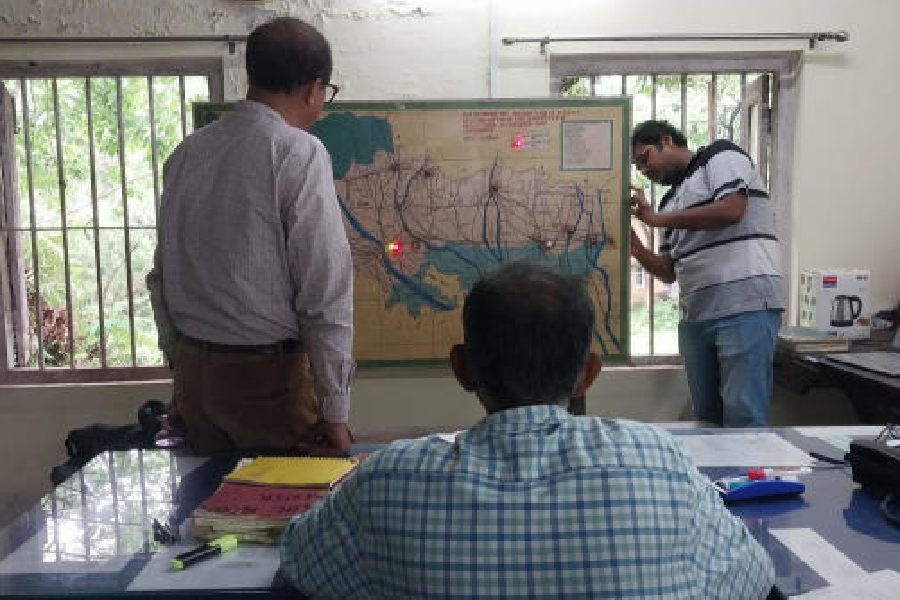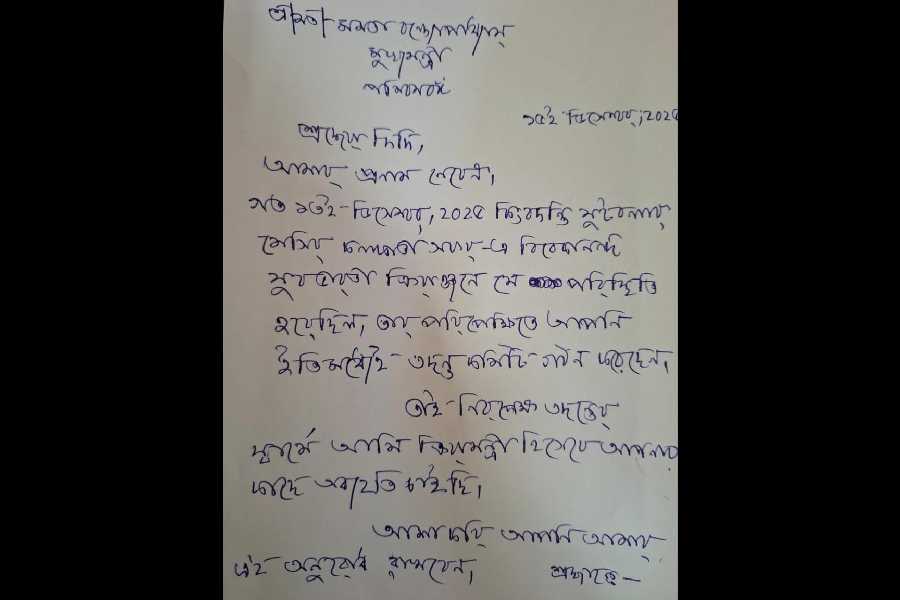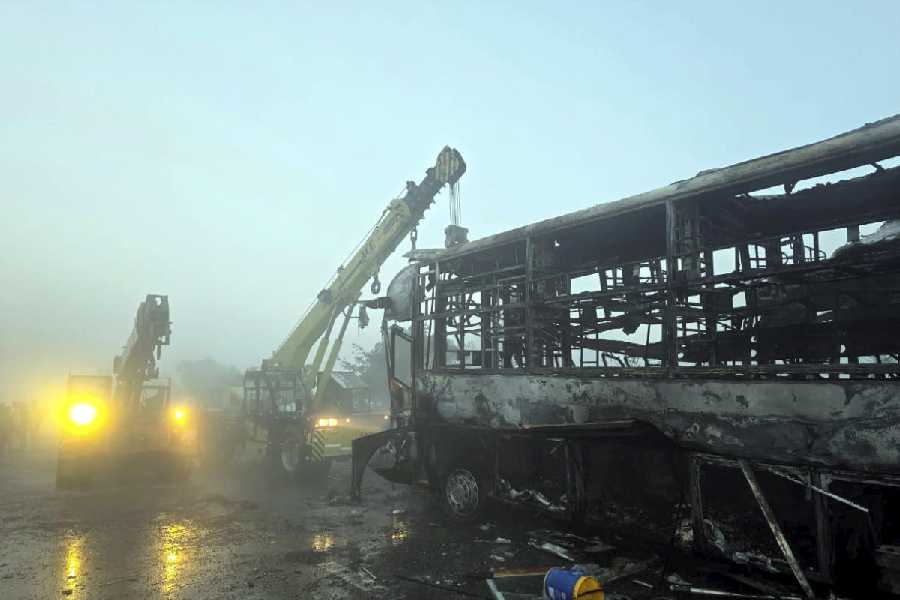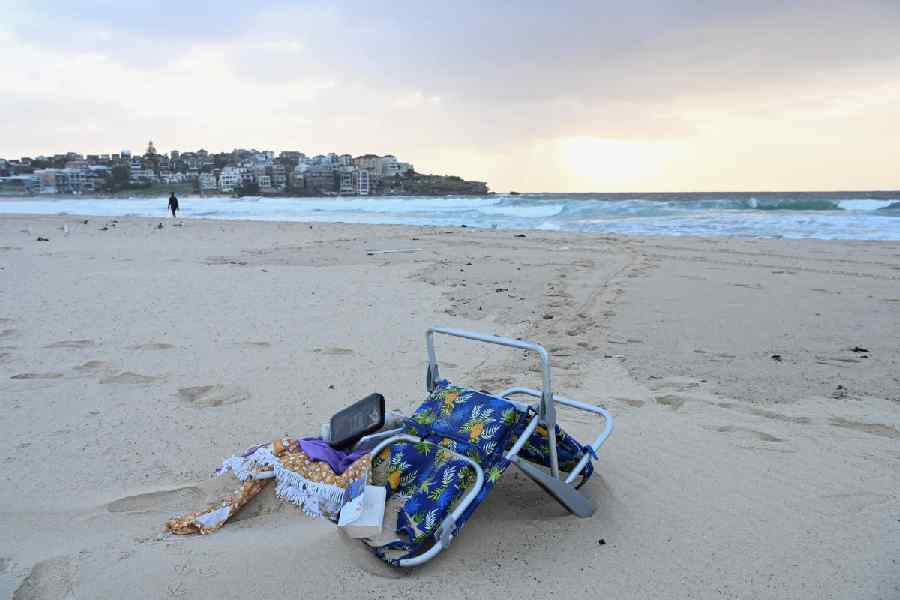Around 1,400 tourists continued to remain stranded in Lachen and Lachung, the two popular destinations in Mangan, northern Sikkim, on Sunday.
Vigorous southwest monsoon led to intense downpour, caused multiple landslides and raised the water levels of Teesta, in turn damaging roads and bridges and causing the tourists, including foreigners, to be stranded.
Sonam Detchu Bhutia, the superintendent of police of Mangan, said on Sunday that 1,276 domestic and two foreign tourists were stuck in Lachung while another 112 domestic and four foreign nationals were in Lachen.
“This morning (Sunday), we tried to evacuate them. The road between Lachung and Chungthang is open, but from Chungthang to Mangan, there are multiple landslides and hence damages. That is why we could not evacuate them today (Sunday). Tomorrow (Monday), if the weather improves, we will put in all efforts to get the tourists from Lachung,” said the senior police officer.
He said that unlike Lachung, the road between Lachen and Chungthang was damaged in multiple locations.
“We believe it will take seven to eight days to restore the road connectivity. Once we evacuate all the tourists from Lachung, we will try to get those who are stranded in Lachen through alternative routes,” he added.
Over the past few days, as the monsoon has set in, Sikkim and the sub-Himalayan Bengal as experienced consistent rainfall.
In Sikkim, the water levels of Teesta have risen and have damaged the abutment of a bridge at Sangklang, which connects Mangan with Chungthang, the junction from where roads lead to Lachen and Lachung.
Also, the Teesta had swelled to such an extent that traffic was stopped over another Bailey bridge in Phidang.
“We checked the Phidang bridge, and if the weather improves tomorrow (Monday), traffic movement will be resumed till Chungthang,” said Bhutia.
Later in the evening, it was learnt that the administration had drawn up an evacuation plan and would try shifting the stranded tourists from Monday 8am.
“It will be initiated via Toong Naga Road through Rel Khola, where the tourists will have to cross a footbridge. The tour operators, cab owners, and others have been asked to arrange vehicles for transshipment of the tourists from Naga to Gangtok,” said a source.
Bhutia, when asked about the situation in Lachen and Lachung, confirmed there was an adequate stock of food grains in both places.
“The hoteliers are cooperating with the stranded tourists. Also, the police and the administration are constantly monitoring the situation,” said SP Bhutia.
Due to the rainfall, the Teesta river has washed away the quality control lab of the dam project at Chungthang, said sources.
Weather experts said there was a forecast of more rainfall during the next few days.
“But the rainfall is likely to be less compared to the past couple of days, which in turn, can reduce the water levels of rivers and help in restoration works,” said an expert.
Flood control room
Incessant rainfall in the upper catchments of the Teesta has prompted the Bengal irrigation department to issue a yellow (primary alert) along unprotected areas on both banks of the river from Domohoni (near Jalpaiguri town) and till Mekhliganj in Cooch Behar where the river
enter Bangladesh.
Also, because of rainfall in Bhutan, a similar alert has been rung along both banks of the Jaldhaka river, which flows through Jalpaiguri and enters from Bhutan.
The early advent of monsoon, which has led to rainfall in most districts of north Bengal, especially in the sub-Himalayan area, has also made the department open a regional flood control room in Jalpaiguri on Sunday to monitor the situation round the clock and issue necessary alerts.
“We get information from 10 rain gauges of our department, 95 gauges of the IMD, and 30 gauges of the central water commission. Simultaneously, we are keeping a watch on the Teesta, Jaldhaka, Torsha, and other rivers to mitigate the damage in case there is any flash flood due to heavy rainfall in the upper catchments of these rivers in Sikkim and Bhutan,” said Krishnendu Bhowmik, the chief engineer (northeast) of the department.
Additional reporting by our Jalpaiguri correspondent










